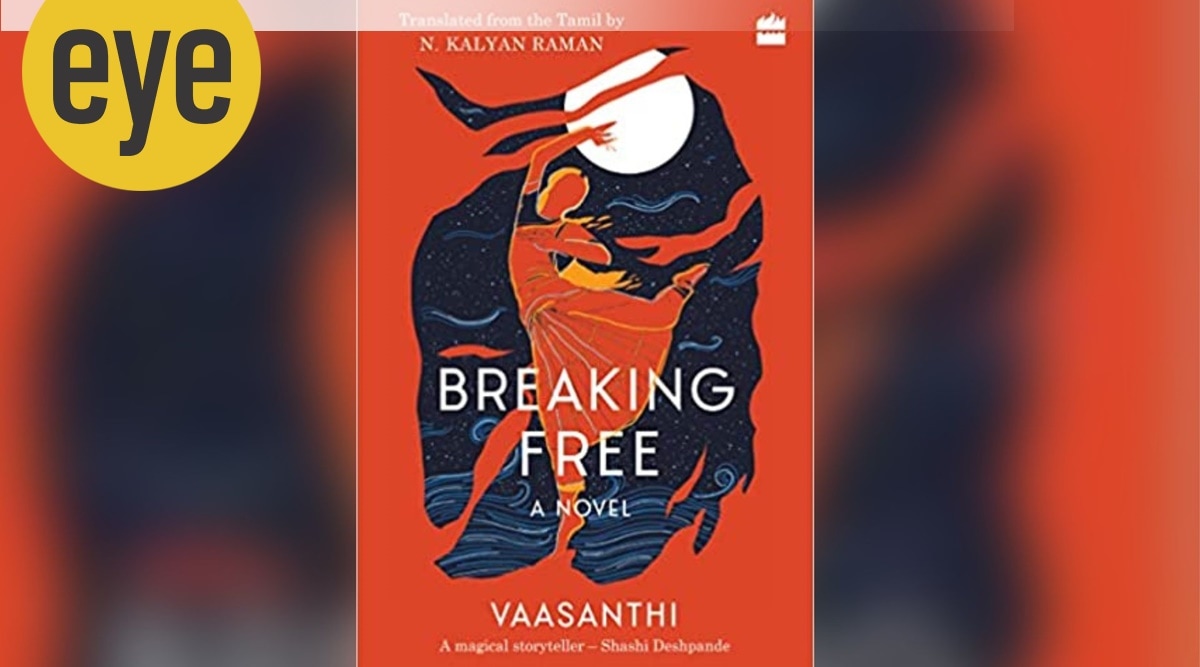 Book cover of 'Breaking Free' by Vaasanthi (Source: Amazon.in)
Book cover of 'Breaking Free' by Vaasanthi (Source: Amazon.in)Breaking Free, the recently released translation of Vaasanthi’s 2012 Tamil novel Vittu Vidhuthalaiyagi, by N Kalyan Raman, is a powerful feminist work that exposes the deep-seated trauma associated with the disenfranchisement of the community of hereditary courtesan dancers — the devadasis — of south India. Historically, the dancers from the Isai Vellalar community were married to the local deity and served in the temples and courts. Their art (dance and vocal music) was patronised by kings and zamindars, which often meant that the women had to enter into non-conjugal, sexual relations with their patrons, rendering them as objects of ridicule and ostracism outside of this structure.
Set in the late 19th century and told through the stories of three generations of a family, Breaking Free brings the intergenerational trauma faced by an entire community to the fore against crucial historical events such as the Devadasi Abolition Bill and the Madras Devadasis (Prevention of Dedication) Act (1947) and the Indian struggle for Independence. Vaasanthi’s protagonists are two women born into the community: while Kasturi is born to dance, truly in love with the deity she is married to, Lakshmi is loosely based on Dr Muthulakshmi Reddy, who was at the forefront of abolishing the devadasi practice from temples.
Lakshmi and Kasturi both long for their father, who, even though known to Lakshmi, remains a metaphor in their lives. The metaphor rests in patronage, meaning that any of their mothers’ patrons could be their father, a truth that haunts them. It is this righteous indignation that spears Lakshmi’s ambitions to become an educated woman, the first one from her community to “break free”. She is unflinching in her vision and has no room for the art that has brought her and her mother shame.
Kasturi, on the other hand, has the soul of an artiste. A charming dancer, she finds herself a suitable patron in no time. Her body is for the public gaze. The few times she tries to exercise her agency, she is met with contempt from her mother, the Durai; her patron the Raja, and others. Unfazed by this, for as long as she can, Kasturi embraces her art. Suppuni, who secretly longs for her, says, “Those who watch Kasturi dance… certainly feel the joy of seeing god in flesh.” She falls in love with Singaram but never betrays her deity. Kasturi’s righteous indignation surfaces when she learns that her old friend is spearheading the movement to abolish her art. It is the only thing that brings honour to her otherwise dishonourable life.
Lakshmi and Kasturi’s struggle to break free from their chains runs parallel to the nation’s struggle for freedom from the British yoke. In many ways, Lakshmi’s own quest for morality, mirroring Dr Reddy’s often patriarchal ambitions for womanhood which sought to make “useful citizens and chaste wives” out of the devadasis, echoes the nation’s idea of morality, too. The novel’s omniscient narratorial voice seamlessly blends in with the characters’ voices, its stream-of-consciousness observations throwing light on the upheavals within and outside. Vaasanthi serves us the ambitions of love, art, honour and the aspirations of a nation-state, without taking away from the intricacies and dilemmas of wanting one or more of those things together. The writer deals with the subject of disenfranchisement with empathy and carefully presents her characters’ cases without antagonising the readers’ opinions of them. The novel also holds a mirror to modern society, especially one with a Brahminical neo-Bharatanatyam, non-Bahujan stance, that perpetuates caste and gender-based atrocities meted out to the hereditary dancer.
Breaking Free does not, however, go into the subject of Bharatanatyam and stays with Sadir (as Bharatanatyam was known before its revival), without betraying it. N Kalyan Raman’s translation ties the work together and opens it up for an entirely new audience. In the timelines it offers, the novel only slips when it tries to thrill the reader with Lakshmi’s granddaughter Maya’s search for clues into her mother’s unnatural death.
In the short list of works that have dealt with the subject of devadasis with sensitivity and responsibility, including Srividya Natarajan’s The Undoing Dance (2018), Breaking Free adds nuance for the interested audience.